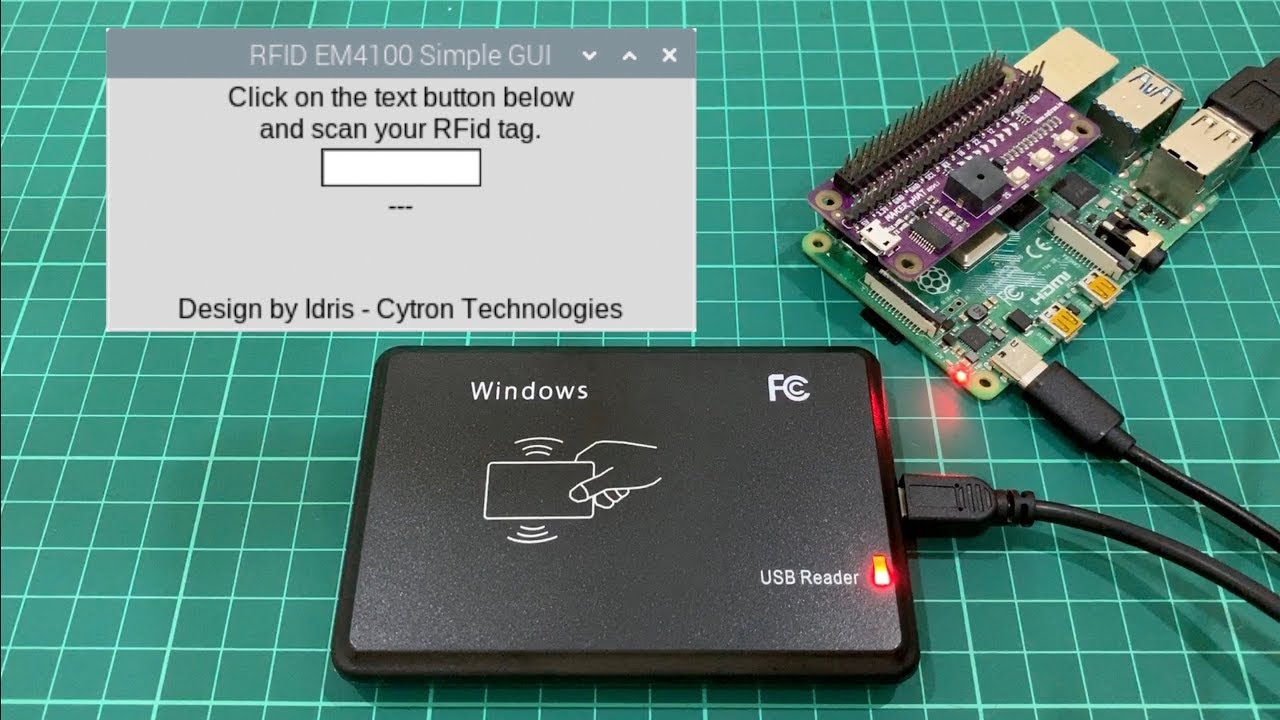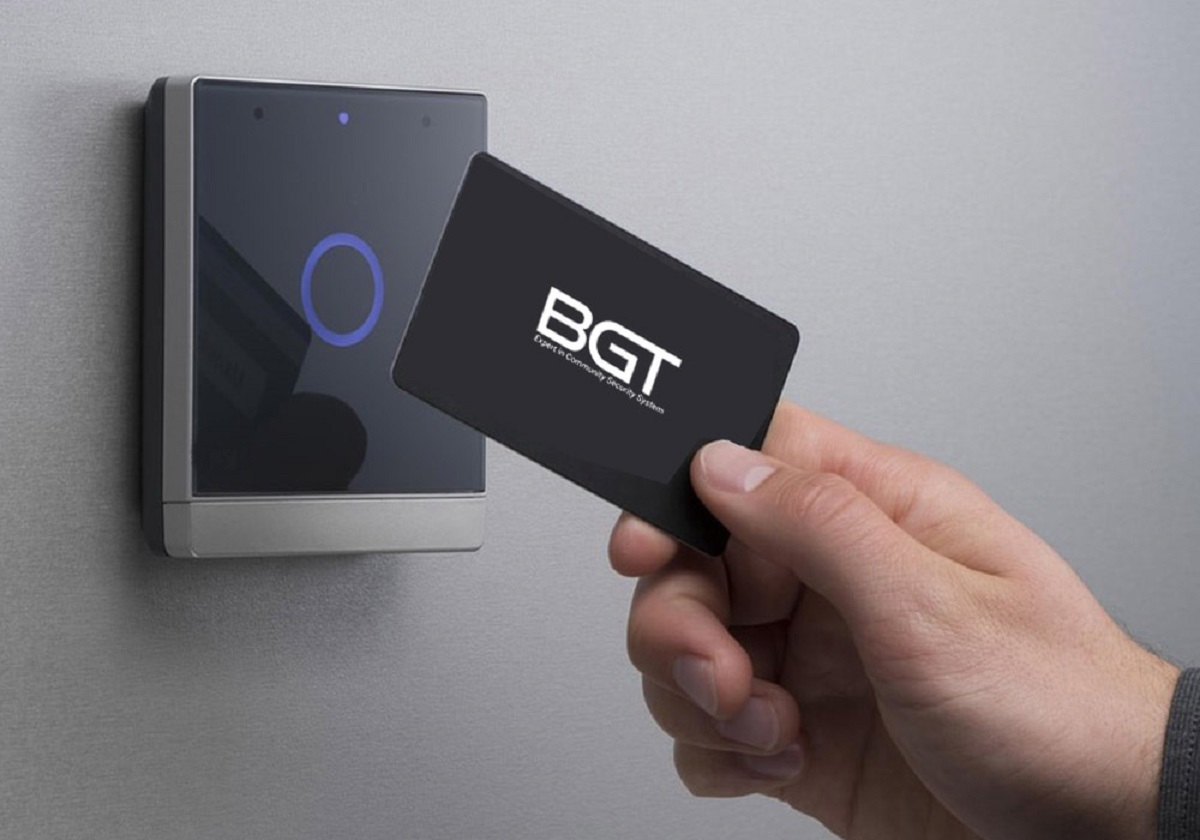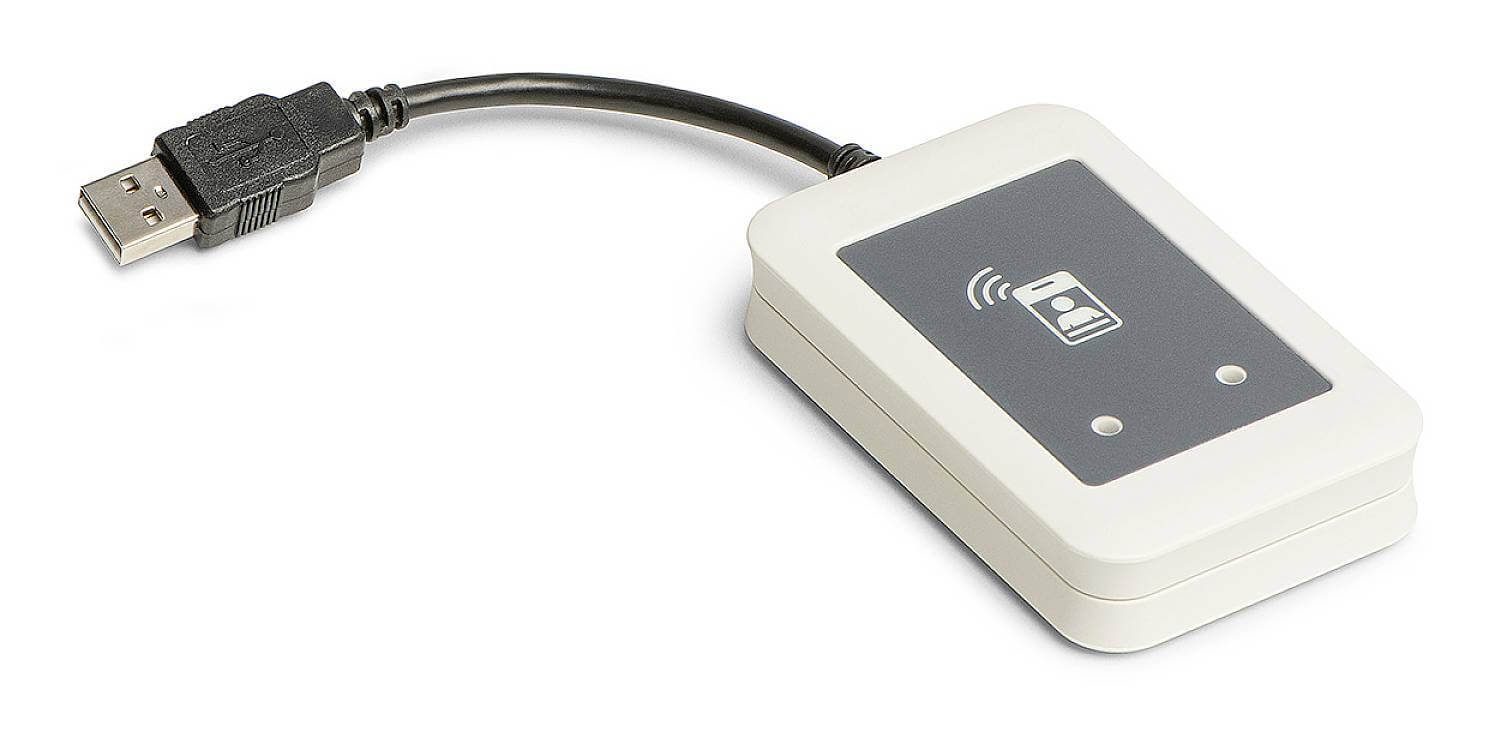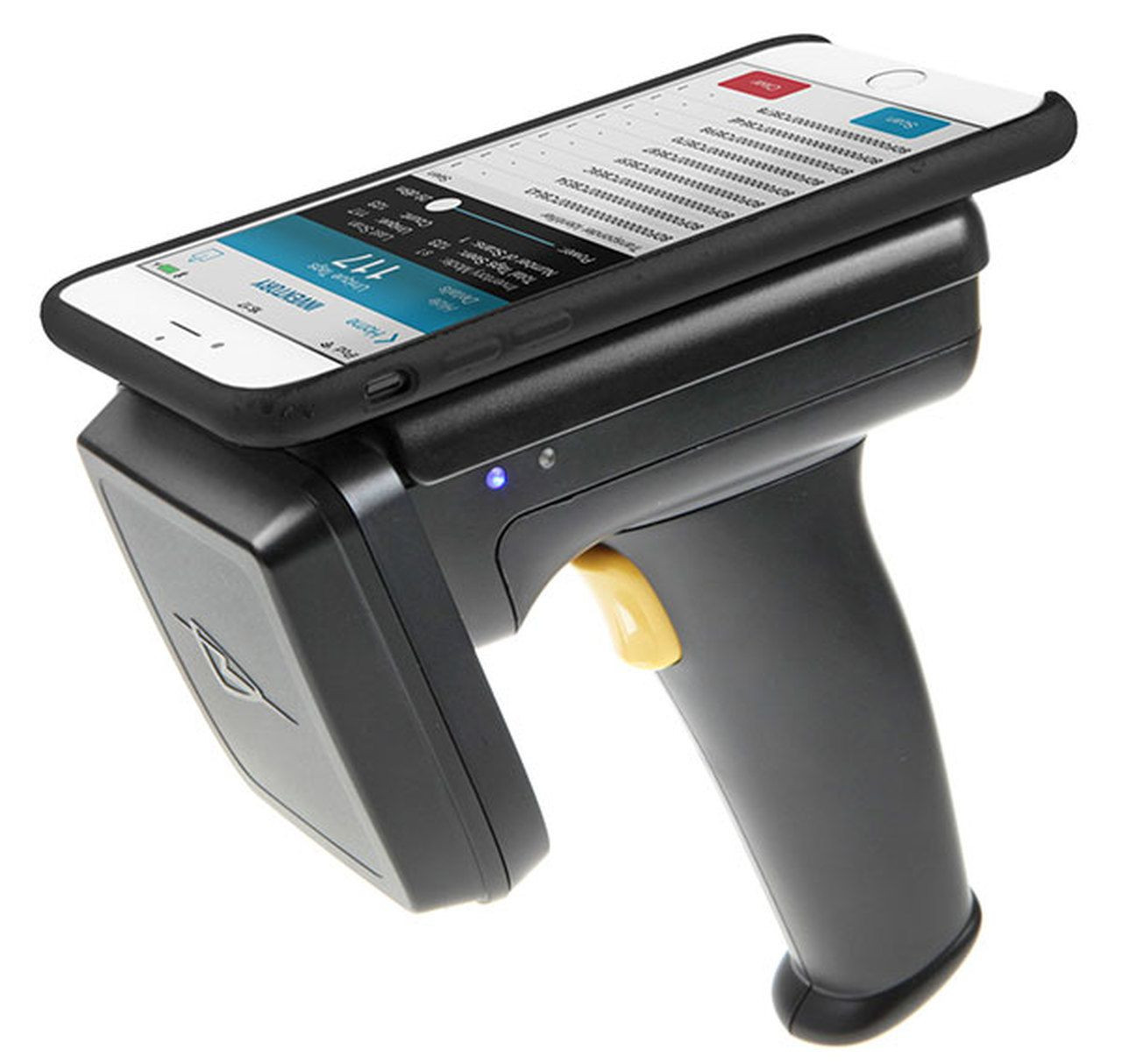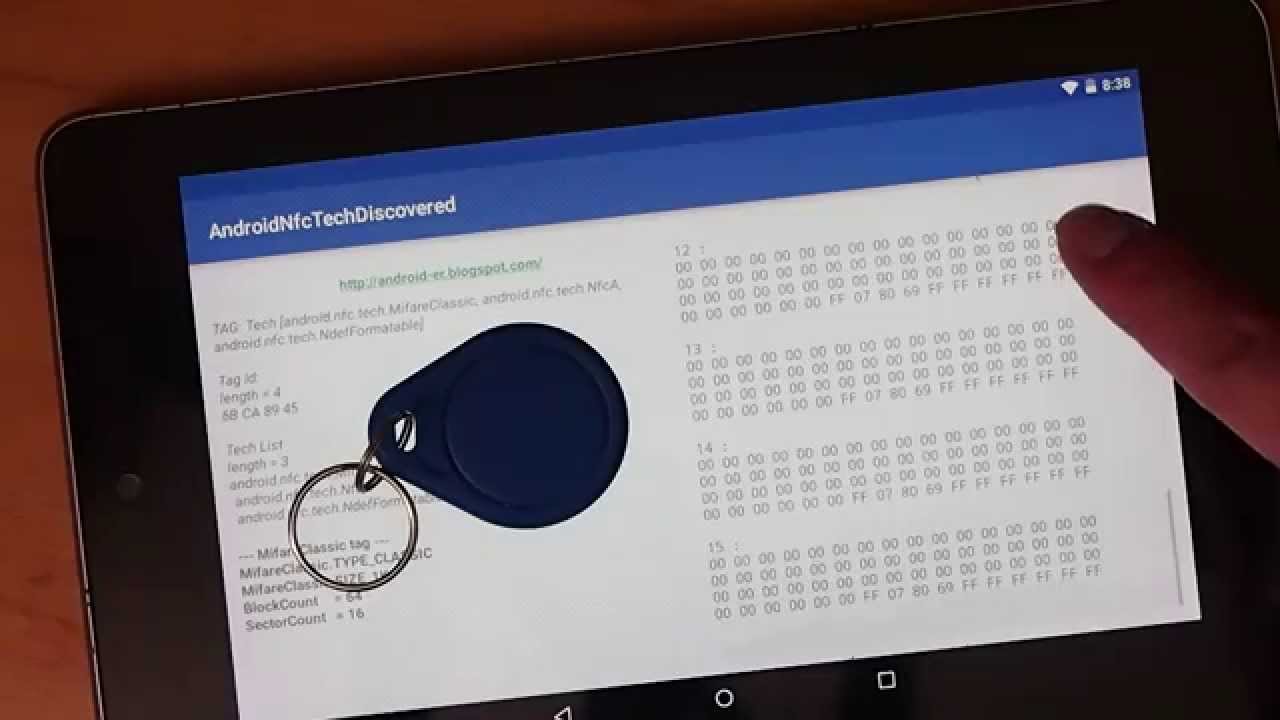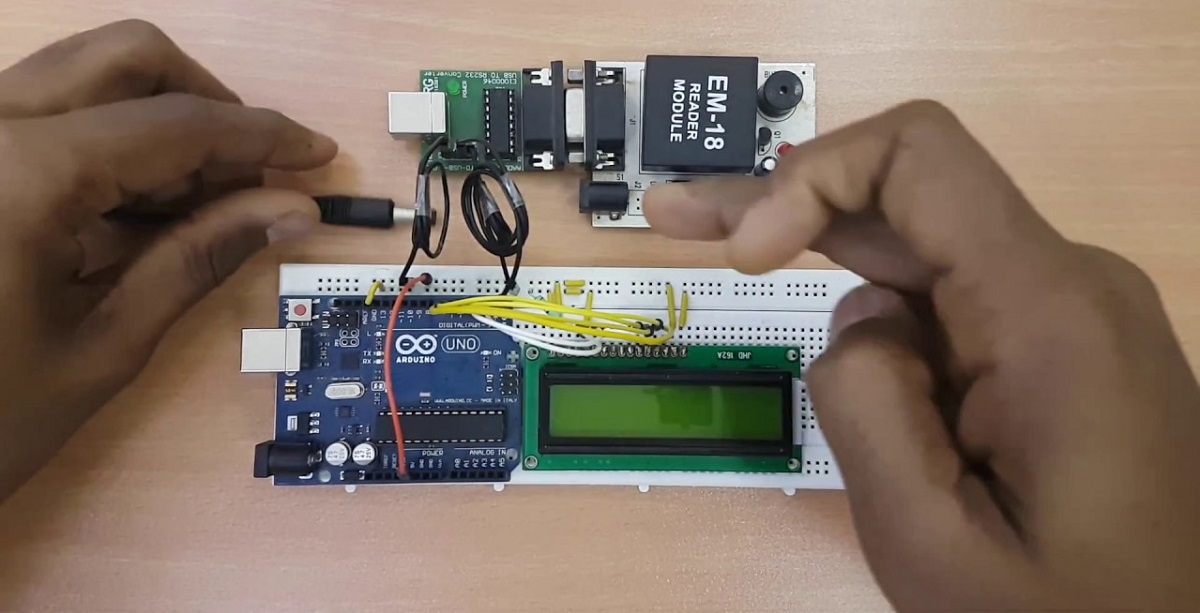Introduction
Welcome to the world of RFID technology! In this increasingly connected and digital age, RFID (Radio-Frequency Identification) has emerged as a powerful tool in various industries, offering efficiency, accuracy, and automation. RFID readers play a vital role in harnessing the capabilities of this technology by allowing businesses to track and identify items with ease.
Whether you are a business owner, an IT professional, or simply curious about RFID reader technology, this article will provide you with a comprehensive guide on how to effectively use an RFID reader. From understanding the basics to troubleshooting common issues, this article will equip you with the knowledge you need to harness the power of RFID technology.
Throughout this guide, we’ll cover everything from understanding the fundamentals of RFID technology to configuring and customizing your RFID reader. We’ll discuss the different types of RFID readers available and guide you in choosing the right one for your specific needs. We’ll also delve into setting up your RFID reader and connecting it to a computer or device for seamless integration.
By the end of this article, you’ll have a thorough understanding of how RFID readers work, how to read RFID tags, interpret the tag data, and troubleshoot any potential issues that may arise. Whether you’re looking to streamline inventory management, improve supply chain visibility, or enhance security, RFID technology and readers are invaluable assets.
So, without further ado, let’s dive into the world of RFID readers and unlock the potential that this technology holds for your business or personal interests. Whether you’re a beginner or a seasoned professional, this guide will provide you with the knowledge and skills to navigate the world of RFID readers with confidence!
What is an RFID Reader?
Before we delve into the intricacies of using an RFID reader, let’s first understand what an RFID reader actually is. In simple terms, an RFID reader is a device that is used to wirelessly communicate with RFID tags. It serves as the gateway between the physical world and the digital realm of RFID technology.
RFID readers are equipped with antennas that emit radio waves and receive signals from RFID tags. These tags, which are attached to objects or embedded in products, contain specific information that can be read and processed by the reader. The reader captures the unique identifier of each tag, allowing businesses to track and monitor their assets efficiently.
RFID readers come in various forms, ranging from handheld devices to fixed readers integrated into larger systems. They can be connected to computers or other devices, enabling seamless data transfer and integration into existing software systems.
RFID readers, along with tags, play a crucial role in numerous industries, revolutionizing processes such as inventory management, supply chain tracking, access control, and asset tracking. These readers can quickly and accurately capture data from multiple tags simultaneously, making them a valuable asset for businesses that require real-time information to enhance operational efficiency.
It’s important to note that RFID readers can operate at different frequencies, depending on the specific application requirements. The most commonly used frequencies are low frequency (LF), high frequency (HF), and ultra-high frequency (UHF). Each frequency has its own advantages and use cases, so it’s essential to select the right one based on the unique needs of your business.
RFID readers can be powered through different methods, such as USB, Ethernet, or battery power. This flexibility allows for seamless integration into various environments and ensures continuous operation.
In summary, an RFID reader is a device that facilitates wireless communication with RFID tags, capturing the unique identifier stored in each tag. It is a powerful tool that enables businesses to collect accurate and real-time data, enhancing operational efficiency and streamlining processes. In the next sections, we will delve deeper into how RFID readers work and explore the different types available in the market.
How Does an RFID Reader Work?
Understanding how an RFID reader works is essential to harnessing its capabilities effectively. At its core, an RFID reader functions by emitting radio waves and receiving signals from RFID tags. Let’s take a closer look at the key components and processes involved in the operation of an RFID reader.
1. Antenna: The RFID reader is equipped with an antenna that generates radio waves. These radio waves transmit energy to the RFID tags and receive signals back from them.
2. Transceiver: The transceiver is responsible for sending and receiving radio waves between the RFID reader and the tags. It converts the received signals into a readable format for further processing.
3. Controller: The controller is the brain of the RFID reader. It manages the overall operation of the reader, including controlling the timing of radio wave emissions, processing the received signals, and communicating with external devices.
4. Power Supply: RFID readers can be powered by various means, such as batteries or external power sources. The power supply ensures that the reader functions continuously and can be used in various environments.
When an RFID tag comes into the range of the reader’s antenna, it receives energy from the emitted radio waves. This energy powers the tag, allowing it to transmit its unique information back to the reader.
RFID tags can be either passive or active. Passive tags do not have an internal power source and rely on the energy provided by the reader. Active tags, on the other hand, have their own power source and can continuously broadcast their information.
Once the reader receives the signals from the tag, it decodes the information, which typically includes a unique identifier specific to the tag. This identifier helps in identifying and distinguishing one tag from another.
The data captured by the reader can be processed in real-time or stored for later analysis and integration into business systems. This capability allows businesses to track and monitor assets, manage inventory, authenticate products, and more.
It’s worth noting that RFID readers can operate at different frequencies, such as low frequency (LF), high frequency (HF), or ultra-high frequency (UHF). The choice of frequency depends on factors such as the application, range requirements, and interference considerations.
In summary, an RFID reader works by emitting radio waves through its antenna, powering RFID tags and receiving signals back from them. The reader’s transceiver and controller process the received signals, allowing businesses to capture and utilize the unique information stored in RFID tags. With this understanding of how an RFID reader operates, we can now explore the different types of RFID readers available on the market.
Types of RFID Readers
RFID technology has evolved over the years, leading to the development of different types of RFID readers. Each type offers distinct features and functionalities, catering to specific industry requirements. Let’s explore the various types of RFID readers available in the market:
1. Handheld Readers: Handheld RFID readers are portable and easy to use. They are compact devices with built-in antennas, making them ideal for applications that require mobility. Handheld readers are commonly used in inventory management, asset tracking, and field service operations.
2. Fixed Readers: Fixed RFID readers are designed to be mounted in a specific location, such as entry points or conveyor belts. They offer a more permanent and stationary solution, ensuring accurate and efficient tracking. Fixed readers are commonly used in access control, supply chain management, and automated inventory systems.
3. Wearable Readers: Wearable RFID readers are gaining popularity in industries that require hands-free operation, such as retail and logistics. These readers are typically in the form of wristbands, armbands, or other wearable accessories, allowing users to scan and capture RFID tag data while performing tasks.
4. Integrated Readers: Integrated RFID readers are built into other devices or systems, such as printers, kiosks, or access control panels. These readers provide a seamless and streamlined solution, eliminating the need for separate reader hardware. Integrated readers are commonly used in self-checkout systems, ticketing machines, and secure access control.
5. Multi-Protocol Readers: Multi-protocol RFID readers support multiple frequencies and protocols, offering compatibility with various types of RFID tags. These readers provide flexibility and versatility, allowing businesses to utilize different tag technologies within a single system.
6. Long-Range Readers: Long-range RFID readers, also known as RFID portals, offer an extended read range, making them suitable for applications that require capturing tag data from a distance. These readers are commonly used in transportation logistics, vehicle tracking, and large-scale inventory management.
7. Embedded Readers: Embedded RFID readers are integrated into other devices, machinery, or equipment, becoming an integral part of the overall system. They are typically used in specialized applications, such as smart shelves, smart appliances, and industrial automation.
Each type of RFID reader has its own strengths and use cases. When selecting an RFID reader, it’s crucial to consider factors such as read range requirements, mobility, integration capabilities, and the specific industry or application needs.
In summary, RFID readers come in various forms, including handheld, fixed, wearable, integrated, multi-protocol, long-range, and embedded readers. By understanding the different types available, businesses can choose the most suitable RFID reader to meet their unique requirements and leverage the benefits of RFID technology.
Choosing the Right RFID Reader
Choosing the right RFID reader is crucial to ensure seamless integration and optimal performance in your business operations. With numerous options available in the market, it’s important to consider several key factors before making a decision. Here are some considerations to keep in mind when selecting an RFID reader:
1. Read Range: Determine the distance at which you need the reader to accurately capture tag data. The read range can vary depending on the type of RFID reader and the application. Consider whether you require short-range, medium-range, or long-range reading capabilities.
2. Frequency Compatibility: Understand the frequency range of the RFID tags you plan to use and ensure that the reader you choose is compatible. Select a reader that supports the specific frequency required for your application, such as low frequency (LF), high frequency (HF), or ultra-high frequency (UHF).
3. Mobility Requirements: Consider whether you need a handheld or portable reader for on-the-go applications or a fixed reader for static installations. Determine if your operations require mobility or if a stationary reader would suffice.
4. Integration Capability: Assess the compatibility of the RFID reader with existing hardware and software systems. Ensure that the reader can seamlessly integrate with your inventory management, access control, or other relevant systems to enable efficient data transfer and analysis.
5. Scalability: Consider your future business needs and growth potential. Choose an RFID reader that can scale with your operations, supporting a growing number of tags and expanding data requirements.
6. Power Options: Evaluate the power options available for the reader. Determine whether it can be powered via USB, Ethernet, or battery, depending on your operational requirements and infrastructure.
7. Durability and Environment: Assess the durability and ruggedness of the reader, especially if it will be used in harsh or challenging environments. Factors such as dust, moisture, temperature, and impact resistance should be considered when selecting a reader that can withstand the conditions of your working environment.
8. Cost and Budget: Consider your budget constraints and the return on investment that the RFID reader will bring to your business. Compare the features, functionalities, and warranty options of different readers to find one that meets your requirements without exceeding your budget.
By carefully considering these factors, you can choose an RFID reader that aligns with your specific needs and objectives. It’s important to conduct thorough research, consult with experts, and possibly test different options to ensure the chosen reader will deliver the expected benefits and enhance your operational efficiency.
In summary, to choose the right RFID reader, consider factors such as read range, frequency compatibility, mobility requirements, integration capability, scalability, power options, durability, environmental suitability, and cost. A well-informed decision will lead to an optimal implementation of RFID technology and maximize the benefits for your business.
Setting Up Your RFID Reader
Properly setting up your RFID reader is crucial for its effective operation and integration into your business processes. Whether you have a handheld, fixed, or integrated RFID reader, follow these steps to ensure a smooth setup:
1. Familiarize Yourself with the User Manual: Read the user manual provided by the RFID reader manufacturer. It contains important information regarding the setup process, technical specifications, and troubleshooting guidance.
2. Identify the Best Location: Determine the optimal placement of your RFID reader. Consider factors such as coverage area, signal strength, interference, and accessibility. Choose a location that allows for efficient tag reading and minimizes obstacles or interference from other devices.
3. Install and Secure the Reader: If you have a fixed RFID reader, securely mount it using the appropriate hardware. Ensure that it is stable and positioned at the desired angle for optimal tag detection. For integrated readers, follow the manufacturer’s instructions for installation within the host device or equipment.
4. Connect Power Source and Cables: Connect the RFID reader to its power source, whether it’s a power outlet, USB port, or other designated power supply. Make sure all cables are properly connected and secured to avoid any loose connections or accidental disconnections.
5. Configure Reader Settings: Access the reader’s configuration settings via a software interface, if applicable. Configure settings such as read range, read rate, data formats, and filtering options to align with your specific requirements. Consult the user manual or manufacturer’s support for guidance on configuring these settings.
6. Test Reader Performance: Perform test readings to ensure that the RFID reader is functioning correctly. Use sample RFID tags and move them within the read range of the reader to verify accurate tag detection and data capture. Monitor the reader’s performance and adjust settings if necessary to optimize tag reading and minimize errors.
7. Integrate with Existing Systems: If you plan to integrate the reader with existing software systems or databases, follow the integration instructions provided by the reader manufacturer. This may involve installing drivers, configuring communication protocols, and establishing data transfer between the reader and your software system.
8. Train Users and Document Procedures: Provide training to users who will be operating the RFID reader. Familiarize them with the setup, configuration, and operation processes. Create documentation that outlines the setup procedures and troubleshooting steps for future reference.
By following these steps, you can ensure a successful setup of your RFID reader, allowing for seamless data capture, integration, and utilization within your business operations. If you encounter any difficulties or require additional support, consult the reader manufacturer’s technical support or seek assistance from RFID experts in the field.
In summary, setting up an RFID reader involves familiarizing yourself with the user manual, selecting an optimal location, installing and securing the reader, connecting power sources and cables, configuring reader settings, testing reader performance, integrating with existing systems, and providing user training and documentation. Thoroughly following these steps will result in a properly configured RFID reader that enhances your business processes and delivers the desired benefits.
Connecting the RFID Reader to a Computer or Device
To fully utilize the capabilities of your RFID reader, it needs to be properly connected to a computer or device for seamless data transfer and integration. Depending on the type of RFID reader and the specific requirements of your setup, there are several ways to establish this connection. Here are the common methods for connecting an RFID reader to a computer or device:
1. USB Connection: One of the most straightforward methods is to connect the RFID reader to a computer or device using a USB cable. Simply plug one end of the USB cable into the appropriate port on the reader and the other end into an available USB port on your computer or device. The operating system will usually recognize the reader and install the necessary drivers automatically.
2. Ethernet Connection: If you require a networked setup or want to connect the RFID reader remotely, an Ethernet connection is a suitable option. Connect one end of an Ethernet cable to the Ethernet port on the reader and the other end to a network switch or router. Ensure that the reader has a compatible IP address assigned, and configure the network settings accordingly on the computer or device that will communicate with the reader.
3. Serial Connection: Some RFID readers support serial communication, allowing them to be connected using a serial cable or adapter. Check the specifications and documentation provided by the manufacturer to determine the appropriate serial port type (RS-232, RS-485) and connector (DB9, DB25). Connect one end of the serial cable or adapter to the reader’s serial port and the other end to a corresponding serial port on your computer or device.
4. Wireless Connection: In cases where physical connections are not practical or desired, RFID readers with wireless capabilities can be connected to a computer or device via Bluetooth or Wi-Fi. Follow the reader’s instructions for enabling the wireless functionality, pairing with the computer or device, and establishing a stable connection. Ensure that both the reader and the computer or device are on the same network for seamless communication.
5. Custom Integration: Depending on your setup requirements and the availability of interfaces on the reader and computer or device, you may need to develop a custom connection solution. This can involve using a specific protocol or communication method, such as RS-485, Modbus, or TCP/IP. Consult with the reader manufacturer, software developer, or a specialist in RFID integration for assistance in designing and implementing a custom connection.
When connecting the RFID reader to a computer or device, ensure that you have the necessary drivers installed, appropriate cables or adapters ready, and the compatible ports available. Follow the instructions provided by the reader manufacturer for specific setup and configuration steps related to the connection method you choose.
In summary, connecting an RFID reader to a computer or device can be done through USB, Ethernet, serial, wireless (Bluetooth or Wi-Fi), or custom integration methods. Consider your specific setup requirements, the available interfaces on the reader and computer or device and follow the manufacturer’s instructions for a successful connection. Once the connection is established, you can start utilizing the functionalities of the RFID reader, capturing tag data, and integrating it into your business processes.
Reading RFID Tags with the Reader
Once you have successfully connected your RFID reader to a computer or device, you are ready to start reading RFID tags. The process of reading tags may vary slightly depending on the specific reader and software used, but the underlying principles remain the same. Here’s a general overview of how to read RFID tags with an RFID reader:
1. Power on the Reader: Ensure that the RFID reader is powered on and connected to the computer or device as per the previous section’s instructions.
2. Position the Reader and Tags: Orient the RFID reader and place the RFID tags within the reader’s read range. The read range depends on the reader’s specifications and can vary from a few centimeters to several meters. Ensure that the tags are aligned properly and have a clear line of sight to the reader’s antenna for accurate detection.
3. Launch the RFID Reader Software: If the RFID reader requires specific software, launch the software on your computer or device. Some RFID readers may function with generic RFID software or can be integrated into existing software systems. Consult the reader’s user manual or the software’s documentation for instructions on launching the application.
4. Activate Reading Function: In the RFID reader software, select the appropriate function or option to initiate the reading process. This may be a button or command specifically labeled for reading tags. Clicking this function will prompt the reader to start scanning for RFID tags within its vicinity.
5. Capture Tag Data: Once the reader starts scanning, it will capture the unique identifier or data stored on the RFID tags within its read range. The reader will typically provide real-time feedback on the tag detection, displaying the tag data on the software interface or emitting a visual or auditory indication of a successful read.
6. Collect and Process Tag Data: The software will collect the tag data captured by the reader and process it according to your specified settings. This may include storing the data in a database, integrating it with existing systems, or performing further analysis or actions based on the tag information.
7. Repeat as Needed: Continue positioning new RFID tags within the reader’s read range, and activate the reading function to capture their data. The reader will consecutively read the tags within its range, allowing for efficient batch scanning.
It’s important to note that various RFID reader software may offer additional features and functionalities. This can include filtering options, data validation, data formatting, and customization of reading parameters based on specific tag types or applications. Consult the reader’s user manual or software documentation for more details on utilizing these features.
With these steps, you can effectively read RFID tags using your RFID reader. Ensure that the reader is positioned correctly, the tags are within the reader’s read range, and the software is properly configured for optimal tag detection. Regularly test and calibrate your reader to maintain accurate and reliable tag reading performance.
In summary, reading RFID tags with an RFID reader involves powering on the reader, positioning the reader and tags correctly, launching the RFID reader software, activating the reading function, capturing the tag data, and collecting and processing the data as needed. By following these steps, you can efficiently capture tag information and utilize it for various applications, such as inventory management, asset tracking, or access control.
Interpreting the Tag Data
Once you have successfully read RFID tags with your RFID reader, the next step is to interpret and make sense of the tag data. RFID tag data can vary based on the type of tag and the information programmed into it. Interpreting this data allows you to glean useful insights and take appropriate actions based on the collected information. Here’s a guide on how to interpret and utilize the tag data:
1. Unique Identifier: The most basic information found in RFID tag data is the unique identifier assigned to each tag. This identifier helps differentiate individual tags from one another. It is typically a string of alphanumeric characters that uniquely identifies the specific tag.
2. Data Fields: RFID tags can store additional information in specific data fields. These fields can include details such as product or item codes, manufacturing dates, batch numbers, or customer information. Depending on your application, you can extract and process these fields to gain insights into your inventory, track expiration dates, or personalize customer experiences.
3. Read Time and Date: RFID readers often capture the time and date when a tag is read. This timestamp is valuable for tracking the movement and lifecycle of items, monitoring access control events, or maintaining accurate records of inventory processes.
4. Sensor Data: Some advanced RFID tags include sensors that can capture and store additional environmental or condition-related data. This can include temperature, humidity, pressure, or vibration readings. Interpreting this sensor data can be crucial in applications such as cold chain management, equipment maintenance, or quality control.
5. Product Authentication: RFID tags can contain encryption or authentication data to verify the authenticity of a product or prevent counterfeiting. Interpretation of this data can help ensure that products in your supply chain are legitimate, maintaining brand reputation and customer trust.
6. System Integration: To fully utilize the tag data, ensure that your RFID reader software integrates with your existing systems or databases. By connecting the captured tag data with other business processes, such as inventory management, supply chain systems, or customer relationship management, you can automate workflows, trigger actions, and gain meaningful insights from the accumulated data.
7. Analysis and Decision-Making: Once you have interpreted the tag data, analyze it to derive insights and make informed decisions. This analysis can involve identifying trends, identifying stock discrepancies, optimizing inventory levels, or identifying potential issues or patterns that require attention or action.
8. Data Security and Privacy: It’s crucial to prioritize data security and privacy when interpreting tag data. Implement proper access controls, encryption, and other security measures to protect sensitive information and ensure compliance with relevant data protection regulations.
Interpreting RFID tag data allows you to make data-driven decisions, optimize processes, improve customer experiences, and enhance overall business operations. Continuously evaluate and refine your interpretation methodologies to extract maximum value from the collected tag data.
In summary, interpreting RFID tag data involves extracting and understanding the unique identifier, data fields, timestamps, sensor data, product authentication details, and other relevant information encoded in the RFID tags. By integrating this data with your systems and conducting thorough analysis, you can drive optimized decision-making, improve operational efficiency, and enhance various aspects of your business processes.
Configuring and Customizing Your RFID Reader
Configuring and customizing your RFID reader is essential to ensure that it meets your specific requirements and operates optimally within your business processes. Customization options may vary depending on the reader model and manufacturer, but here are some key aspects to consider when configuring your RFID reader:
1. Reader Settings: Most RFID readers offer a range of configurable settings that allow you to fine-tune their operation. These settings may include read range, read rate, power output, data formatting, filtering options, and antenna configuration. Adjusting these settings can help optimize the reader’s performance for your specific application.
2. Tag Compatibility: Depending on the RFID tag types you use, the reader may require certain configurations to ensure optimal tag reading. This can involve selecting the appropriate frequency, adjusting the timing parameters, or enabling specific protocols compatible with your tags. Consult the reader’s user manual or manufacturer’s documentation for guidance on tag compatibility and configuration.
3. Data Formatting: Configure the reader to format the read tag data in a way that suits your data management and integration needs. This includes defining data fields, specifying data delimiters, and applying data transformations or calculations. Customizing the data format ensures seamless integration with your existing software systems or databases.
4. Integration with Software Systems: If you’re using specific RFID reader software or integrating the reader with existing software systems, configure the reader to enable seamless communication and data transfer. This may involve configuring communication protocols, setting up data exchange formats, or establishing connection parameters that align with your software system requirements.
5. Event Triggering and Automation: Some RFID readers allow for event triggering or automation based on specific conditions or tag reads. Configure the reader to perform certain actions or trigger events when particular tag data is detected. For example, you can set up the reader to send notifications, update inventory systems, or trigger alarms based on predefined rules or criteria.
6. User Interface Customization: If the RFID reader comes with a user interface, explore customization options to tailor it to your preferences. This can include modifying display settings, adjusting alert sounds or visuals, or configuring user access levels and permissions for different user roles.
7. Firmware Updates: Stay up-to-date with the latest firmware releases provided by the manufacturer. Periodically check for firmware updates and apply them to your RFID reader to benefit from bug fixes, performance improvements, and new features. Follow the manufacturer’s instructions for updating the firmware to ensure a smooth process and maintain the reader’s optimal functionality.
8. Experiment and Fine-Tune: Finally, don’t be afraid to experiment with different settings and configurations to find the optimal setup for your specific use case. Fine-tune the reader’s settings based on real-world testing and observations to achieve the best performance and efficiency.
Remember to document the configurations and customizations you make for future reference. This documentation will be helpful for troubleshooting, sharing knowledge among team members, and replicating setups for additional RFID readers in your organization.
In summary, configuring and customizing your RFID reader involves adjusting settings such as read range, read rate, data formatting, and integration options to align with your specific requirements. Explore customization possibilities, stay updated with firmware releases, and experiment to fine-tune the reader’s performance for optimal results within your business processes.
Troubleshooting Common Issues
While RFID technology offers numerous benefits, like any technology, RFID readers can encounter issues that may hinder their performance. Knowing how to troubleshoot these common issues ensures smooth operation and quick resolutions. Here are some common issues you may encounter with RFID readers and troubleshooting solutions:
1. No Tag Detection: If the reader fails to detect any RFID tags, ensure that the tags are within the reader’s read range and have line-of-sight to the reader’s antenna. Check if the reader’s power is on and properly connected. Verify that the tags are compatible with the reader’s supported frequency and that they are functional.
2. Inconsistent Tag Detection: If the reader inconsistently detects RFID tags, check for potential interference from nearby devices or metal objects. Ensure that the reader’s antenna is not obstructed and that the tags are positioned properly within the reader’s read range. Adjust the reader’s settings, such as power output or filtering options, to optimize tag detection and minimize interference.
3. Misread Tags or Data Errors: If the reader misreads tags or encounters data errors, validate the quality and encoding of the RFID tags. Ensure that the tags are encoded correctly and that the reader is configured to interpret the tag data accurately. Check for any interference or signal reflection that may cause data corruption or read errors.
4. Reader Connectivity Issues: If you experience connectivity issues between the RFID reader and the computer or device, verify that the cables are securely connected. Switch the USB or ethernet ports to rule out any hardware or port-related issues. Update the reader’s drivers or firmware to ensure compatibility with the operating system or software being used.
5. Slow Reader Response: If the reader is responding slowly, consider reducing the read rate or adjusting the reader’s settings to optimize performance based on your application requirements. Check for any software or network-related issues that may impact the reader’s response time.
6. Power or Battery Problems: For battery-powered or portable RFID readers, ensure that the batteries are fully charged or replaced with fresh ones. Verify that the power source for the reader is stable and properly connected. Check if there are any power-saving features enabled that may affect the reader’s performance.
7. Software Integration Issues: If you encounter difficulties integrating the reader with your software system, verify that the reader’s communication protocols and data formats are compatible with the software. Check for any firewall or security settings that may be blocking the communication between the reader and the software. Consult both the reader’s and the software’s documentation for troubleshooting guidance.
8. Environmental Factors: Extreme environmental conditions, such as high humidity, temperature fluctuations, or electromagnetic interference, can affect the performance of an RFID reader. Ensure that the reader is operating within the specified environmental limits. Consider using ruggedized or specialized readers designed for harsh environments if necessary.
9. Consult Manufacturer Support: If you have exhausted all troubleshooting options and still encounter issues, contact the RFID reader manufacturer’s technical support. They can provide additional guidance and assist in resolving complex issues or hardware-related problems.
Keeping a record of troubleshooting steps, resolutions, and lessons learned can help streamline future issue resolution and enable efficient knowledge sharing within your organization.
In summary, troubleshooting common issues with RFID readers involves validating tag detection, addressing connectivity and power problems, adjusting settings for optimal performance, resolving software integration issues, and considering environmental factors. By following these troubleshooting steps, you can effectively identify and resolve issues, ensuring smooth operation and maximizing the benefits of RFID technology.
Conclusion
In this comprehensive guide, we have explored the world of RFID readers and how to effectively use them. RFID technology offers businesses the ability to track and identify items with ease, bringing efficiency, accuracy, and automation to various industries. By understanding the basics of RFID technology, the different types of RFID readers available, and the process of setting up and configuring these readers, you can unlock their full potential.
We have covered the process of connecting the RFID reader to a computer or device, reading RFID tags, interpreting the tag data, and customizing the reader to fit your specific needs. Additionally, we have discussed troubleshooting common issues that may arise during the operation of RFID readers.
With this knowledge, you can enhance your inventory management, improve supply chain visibility, streamline access control, and boost asset tracking capabilities. RFID readers provide invaluable insights into your business operations, allowing you to make data-driven decisions, automate processes, and optimize efficiency.
Remember to always consult the user manual, manufacturer’s documentation, and seek assistance from technical support when needed. Keep up with the latest firmware updates, stay informed about industry trends, and continuously evaluate and refine your RFID reader setup to ensure it aligns with your evolving business needs.
Embracing the power of RFID readers opens up a world of opportunities to revolutionize your business processes, increase productivity, and drive overall success. With the right RFID reader and a solid understanding of its functionalities and applications, you can embark on a journey of enhanced efficiency, accuracy, and automation in your daily operations.
So, get ready to unlock the full potential of RFID technology and take your business to new heights with the utilization of RFID readers!







